Super User
Can Vitamin Deficiencies Cause Cracked Heels?
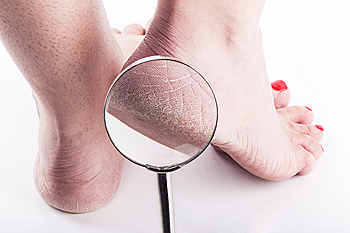
Cracked heels are a common foot problem, causing discomfort and often aesthetic concerns. While several factors contribute to this issue, vitamin deficiency is an often overlooked culprit. Specifically, vitamins A, C, and E play important roles in maintaining skin health. Vitamin A is essential for skin repair and maintenance. This type of deficiency can lead to dry, flaky skin, making it more prone to cracking. Vitamin C is known for its role in collagen production, a protein vital for skin strength and elasticity. Without enough vitamin C, skin can become fragile and susceptible to fissures. Additionally, vitamin E is a powerful antioxidant that helps protect skin from damage and maintains its moisture balance. A shortage of vitamin E can result in dry, rough skin, making the heels more likely to crack. To combat cracked heels, a balanced diet rich in these essential vitamins, along with proper foot care, is essential. Ensuring you have an adequate intake of these vitamins can go a long way in keeping your heels smooth and healthy. If you have cracked heels, it is strongly suggested that you are under the care of a podiatrist who can offer effective prevention techniques and treatment for this condition.
If the skin on your feet starts to crack, you may want to see a podiatrist to find treatment. If you have any concerns, contact Dr. Thomas E. Silver from Westwood Foot Clinic. Our doctor can provide the care you need to keep you pain-free and on your feet.
Cracked Heels
It is important to moisturize your cracked heels in order to prevent pain, bleeding, and infection. The reason cracked heels form is because the skin on the foot is too dry to support the immense pressure placed on them. When the foot expands, the dry skin on the foot begins to split.
Ways to Help Heal Them
- Invest in a good foot cream
- Try Using Petroleum Jelly
- Ease up on Soaps
- Drink Plenty of Water
Ways to Prevent Cracked Heels
- Moisturize After Showering
- Skip a Shower
- Keep Shower Water Lukewarm
- Don’t Scrub Your Feet
If you are unsure how to proceed in treating cracked heels, seek guidance from a podiatrist. Your doctor will help you with any questions or information you may need.
If you have any questions, please feel free to contact our office located in Golden Valley, MN . We offer the newest diagnostic and treatment technologies for all your foot care needs.
Tips to Improve Blood Flow in the Feet
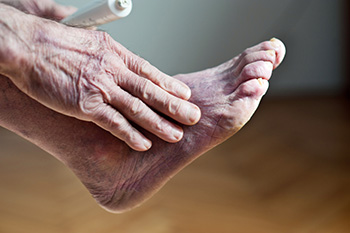
Proper circulation is essential for overall health, and when it comes to your feet, it is no different. Poor circulation in the feet can lead to coldness and a numbing and tingling sensation. Fortunately, there are several strategies that can enhance blood flow to your feet. It is important to understand that engaging in a regular exercise routine is a game changer. Activities such as walking, swimming, and yoga can get your blood pumping and improve circulation. Foot exercises, such as toe taps and ankle rotations, can be particularly beneficial. Maintaining a healthy weight is crucial, as excess body fat can impede blood flow. A balanced diet rich in fruits, vegetables, and whole grains can aid in weight management and overall circulation. Elevating your feet whenever possible, especially after a long day, may help to reduce swelling and can encourage blood flow back to your heart. Wearing proper footwear is essential. Choose comfortable, well-fitting shoes that provide support and do not constrict blood vessels. Additionally, it is beneficial to avoid smoking and limit caffeine intake, as these can contribute to poor circulation. Finally, stay hydrated and manage stress, as they both negatively impact circulation. If you have poor circulation, it is suggested that you speak with a podiatrist who can provide you with additional relief tips.
Poor circulation is a serious condition and needs immediate medical attention. If you have any concerns with poor circulation in your feet contact Dr. Thomas E. Silver of Westwood Foot Clinic. Our doctor will treat your foot and ankle needs.
Poor Circulation in the Feet
Poor blood circulation in the feet and legs is can be caused by peripheral artery disease (PAD), which is the result of a buildup of plaque in the arteries.
Plaque buildup or atherosclerosis results from excess calcium and cholesterol in the bloodstream. This can restrict the amount of blood which can flow through the arteries. Poor blood circulation in the feet and legs are sometimes caused by inflammation in the blood vessels, known as vasculitis.
Causes
Lack of oxygen and oxygen from poor blood circulation restricts muscle growth and development. It can also cause:
- Muscle pain, stiffness, or weakness
- Numbness or cramping in the legs
- Skin discoloration
- Slower nail & hair growth
- Erectile dysfunction
Those who have diabetes or smoke are at greatest risk for poor circulation, as are those who are over 50. If you have poor circulation in the feet and legs it may be caused by PAD and is important to make changes to your lifestyle in order to reduce risk of getting a heart attack or stroke. Exercise and maintaining a healthy lifestyle will dramatically improve conditions.
As always, see a podiatrist as he or she will assist in finding a regimen that suits you. A podiatrist can also prescribe you any needed medication.
If you have any questions please feel free to contact our office located in Golden Valley, MN . We offer the newest diagnostic and treatment technologies for all your foot and ankle needs.
Definition and Underlying Causes of Gout
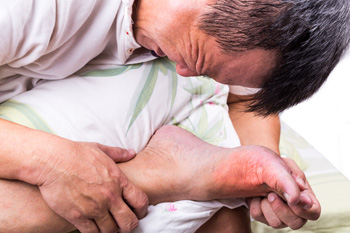
Gout is a painful form of arthritis that results from the buildup of uric acid crystals in the joints. This condition can affect anyone, and it typically targets the big toe joint. A noticeable symptom of gout is intense pain, swelling, and redness in the affected joint, often occurring suddenly and causing discomfort that can last for days or weeks. The primary cause of gout is an overabundance of uric acid in the bloodstream, a condition known as hyperuricemia. Uric acid forms when the body breaks down purines, which are found in certain foods and are also produced naturally by the body. Factors such as genetics, a diet rich in purines, excessive alcohol consumption, and obesity can contribute to elevated uric acid levels. Treatment of gout typically involves managing pain during flare-ups with anti-inflammatory medications and lifestyle modifications can help to reduce uric acid levels. Long-term strategies often include dietary changes, weight management, and medications to lower uric acid production. By understanding gout's definition, causes, and appropriate treatment options, individuals can take proactive steps to alleviate pain and prevent future attacks. If you suffer from gout, it is strongly suggested that you are under the care of a podiatrist who can help you to manage this condition.
Gout is a painful condition that can be treated. If you are seeking treatment, contact Dr. Thomas E. Silver from Westwood Foot Clinic. Our doctor will treat your foot and ankle needs.
What Is Gout?
Gout is a form of arthritis that is characterized by sudden, severe attacks of pain, redness, and tenderness in the joints. The condition usually affects the joint at the base of the big toe. A gout attack can occur at any random time, such as the middle of the night while you are asleep.
Symptoms
- Intense Joint Pain - Usually around the large joint of your big toe, and it most severe within the first four to twelve hours
- Lingering Discomfort - Joint discomfort may last from a few days to a few weeks
- Inflammation and Redness -Affected joints may become swollen, tender, warm and red
- Limited Range of Motion - May experience a decrease in joint mobility
Risk Factors
- Genetics - If family members have gout, you’re more likely to have it
- Medications - Diuretic medications can raise uric acid levels
- Gender/Age - Gout is more common in men until the age of 60. It is believed that estrogen protects women until that point
- Diet - Eating red meat and shellfish increases your risk
- Alcohol - Having more than two alcoholic drinks per day increases your risk
- Obesity - Obese people are at a higher risk for gout
Prior to visiting your podiatrist to receive treatment for gout, there are a few things you should do beforehand. If you have gout you should write down your symptoms--including when they started and how often you experience them, important medical information you may have, and any questions you may have. Writing down these three things will help your podiatrist in assessing your specific situation so that he or she may provide the best route of treatment for you.
If you have any questions, please feel free to contact our office located in Golden Valley, MN . We offer the newest diagnostic and treatment technologies for all your foot care needs.
Causes and Treatments for Ingrown Toenails
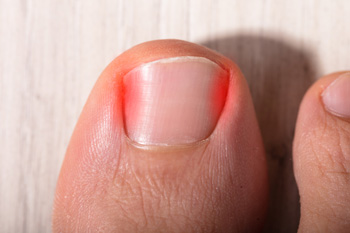
Within the world of common foot woes, ingrown toenails stand as a painful and bothersome issue that can disrupt daily life. These occur when the edges of a toenail grow into the surrounding skin, leading to inflammation and discomfort. Often stemming from improper nail trimming, wearing tight footwear, or genetic reasons, ingrown toenails can bring about pain, swelling, and possibly infection. Treating this condition involves gentle soaking, proper nail trimming techniques, and wearing comfortable, well-fitting shoes. In cases of infection, consulting a podiatrist is crucial in preventing complications. In more severe instances, surgical intervention may be necessary to provide long lasting relief. By understanding the causes and exploring the range of treatments, individuals can actively engage in preventing ingrown toenails. If you have developed an ingrown toenail, it is strongly suggested that you confer with a podiatrist who can offer you treatment methods that are correct for you.
Ingrown toenails may initially present themselves as a minor discomfort, but they may progress into an infection in the skin without proper treatment. For more information about ingrown toenails, contact Dr. Thomas E. Silver of Westwood Foot Clinic. Our doctor can provide the care you need to keep you pain-free and on your feet.
Ingrown Toenails
Ingrown toenails are caused when the corner or side of a toenail grows into the soft flesh surrounding it. They often result in redness, swelling, pain, and in some cases, infection. This condition typically affects the big toe and may recur if it is not treated properly.
Causes
- Improper toenail trimming
- Genetics
- Improper shoe fitting
- Injury from pedicures or nail picking
- Abnormal gait
- Poor hygiene
You are more likely to develop an ingrown toenail if you are obese, have diabetes, arthritis, or have any fungal infection in your nails. Additionally, people who have foot or toe deformities are at a higher risk of developing an ingrown toenail.
Symptoms
Some symptoms of ingrown toenails are redness, swelling, and pain. In rare cases, there may be a yellowish drainage coming from the nail.
Treatment
Ignoring an ingrown toenail can have serious complications. Infections of the nail border can progress to a deeper soft-tissue infection, which can then turn into a bone infection. You should always speak with your podiatrist if you suspect you have an ingrown toenail, especially if you have diabetes or poor circulation.
If you have any questions, please feel free to contact our office located in Golden Valley, MN . We offer the newest diagnostic and treatment technologies for all your foot care needs.
How Cracked Heels Be Prevented

There are many reasons why the skin on the heels may crack. These can include wearing open backed shoes, standing on uneven surfaces, or not drinking enough water. Additionally, there may be medical conditions that can cause cracked heels, such as diabetes, eczema, or psoriasis. Some people may develop cracked heels from soaking in a bath for long periods, using harsh soap, or possibly from taking extremely hot showers. Patients who are obese may experience this condition as a result of the added weight the feet must endure. Cracked heels may be prevented by washing and drying the feet daily, followed by applying a good moisturizer on them. It is beneficial to drink plenty of water each day, in addition to incorporating healthy foods into your eating regime. Flip flops and sandals are best for the feet while worn in beach and pool areas, but closed shoes can provide better protection while pursuing other activities. If you have cracked heels, it is suggested that you seek the expertise of a podiatrist who can offer you treatment options, which may include prescribed medicine.
Cracked heels are unsightly and can cause further damage to your shoes and feet. If you have any concerns, contact Dr. Thomas E. Silver from Westwood Foot Clinic. Our doctor can provide the care you need to keep you pain-free and on your feet.
Cracked Heels
Cracked heels appear unappealing and can make it harder for you walk around in sandals. Aside from looking unpleasant, cracked heels can also tear stockings, socks, and wear out your shoes. There are several methods to help restore a cracked heel and prevent further damage.
How Do You Get Them?
Dry skin is the number one culprit in creating cracked heels. Many athletes, walkers, joggers, and even swimmers suffer from cracked heels. Age and skin oil production play a role to getting cracked heels as well.
Promote Healing
Over the counter medicines can help, especially for those that need instant relief or who suffer from chronic dry feet.
Wear Socks – Wearing socks with medicated creams helps lock in moisture.
Moisturizers – Applying both day and night will help alleviate dryness which causes cracking.
Pumice Stones – These exfoliate and remove dead skin, which allows for smoother moisturizer application and better absorption into the skin.
Change in Diet
Eating healthy with a well-balanced diet will give the skin a fresh and radiant look. Your body responds to the kinds of food you ingest. Omega-3 fatty acids and zinc supplements can also revitalize skin tissue.
Most importantly, seek professional help if unsure how to proceed in treating cracked heels. A podiatrist will help you with any questions or information needed.
If you have any questions, please feel free to contact our office located in Golden Valley, MN . We offer the newest diagnostic and treatment technologies for all your foot care needs.
Can Arthritis in the Feet Be Helped?
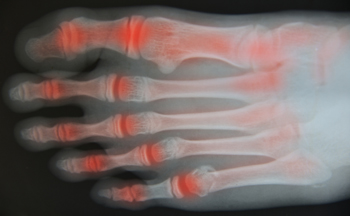
The painful condition that is known as arthritis affects the joints in the body, and the feet are no exception. The most common type of arthritis is known as osteoarthritis, and can occur from wear and tear in the joints. The feet are often taken for granted until they become painful. Arthritis is a condition that can cause foot pain, and happens when the joints become inflamed. The area where two bones connect is referred to as a joint, and arthritis can happen to one or more of the 33 joints that are found in each foot. Some of the early symptoms people can experience can consist of stiffness, redness, and the affected area can be swollen and warm when touched. Gout is another form of arthritis that has sudden symptoms, and is generally felt overnight. This type of gout is caused by having excess uric acid in the blood, and effective prevention methods can include drinking plenty of water, and eating foods that are healthy. Treatment methods for different types of arthritis may include taking herbal supplements, or prescription medicine. If you have arthritis in your feet, it is strongly suggested that you contact a podiatrist who can expertly diagnose and promote quality arthritic foot care.
Arthritis can be a difficult condition to live with. If you are seeking treatment, contact Dr. Thomas E. Silver from Westwood Foot Clinic. Our doctor can provide the care you need to keep you pain-free and on your feet.
Arthritic Foot Care
Arthritis is a term that is commonly used to describe joint pain. The condition itself can occur to anyone of any age, race, or gender, and there are over 100 types of it. Nevertheless, arthritis is more commonly found in women compared to men, and it is also more prevalent in those who are overweight. The causes of arthritis vary depending on which type of arthritis you have. Osteoarthritis for example, is often caused by injury, while rheumatoid arthritis is caused by a misdirected immune system.
Symptoms
- Swelling
- Pain
- Stiffness
- Decreased Range of Motion
Arthritic symptoms range in severity, and they may come and go. Some symptoms stay the same for several years but could potentially get worse with time. Severe cases of arthritis can prevent its sufferers from performing daily activities and make walking difficult.
Risk Factors
- Occupation – Occupations requiring repetitive knee movements have been linked to osteoarthritis
- Obesity – Excess weight can contribute to osteoarthritis development
- Infection – Microbial agents can infect the joints and trigger arthritis
- Joint Injuries – Damage to joints may lead to osteoarthritis
- Age – Risk increases with age
- Gender –Most types are more common in women
- Genetics – Arthritis can be hereditary
If you suspect your arthritis is affecting your feet, it is crucial that you see a podiatrist immediately. Your doctor will be able to address your specific case and help you decide which treatment method is best for you.
If you have any questions, please feel free to contact our office located in Golden Valley, MN . We offer the newest diagnostic and treatment technologies for all your foot care needs.
Why Do Feet Fall Asleep During Pregnancy?

During a woman’s pregnancy, she might notice that her feet fall asleep frequently. In other words, she might notice that her feet often experience numbness or a pins-and-needles feeling. This is actually not an uncommon symptom that results from pregnancy. In fact, many women can experience this feeling in the feet at night or immediately upon waking in the morning. The reason why pregnancy can cause numbness in the feet is due to the fact that pregnancy can lead to nerve compression in this area. If you are someone that is pregnant or planning to be, it is suggested that you contact a podiatrist today. This foot specialist will be able to help the pregnant woman navigate feelings of numbness in the feet.
Pregnant women with swollen feet can be treated with a variety of different methods that are readily available. For more information about other cures for swollen feet during pregnancy, consult with Dr. Thomas E. Silver from Westwood Foot Clinic. Our doctor will attend to all of your foot and ankle needs.
What Foot Problems Can Arise During Pregnancy?
One problem that can occur is overpronation, which occurs when the arch of the foot flattens and tends to roll inward. This can cause pain and discomfort in your heels while you’re walking or even just standing up, trying to support your baby.
Another problem is edema, or swelling in the extremities. This often affects the feet during pregnancy but tends to occur in the later stages.
How Can I Keep My Feet Healthy During Pregnancy?
- Wearing orthotics can provide extra support for the feet and help distribute weight evenly
- Minimize the amount of time spent walking barefoot
- Wear shoes with good arch support
- Wear shoes that allow for good circulation to the feet
- Elevate feet if you experience swelling
- Massage your feet
- Get regular, light exercise, such as walking, to promote blood circulation to the feet
If you have any questions please feel free to contact our office located in Golden Valley, MN . We offer the newest diagnostic and treatment technologies for all your foot and ankle needs.
How to Properly Stretch the Feet
 The benefits of performing stretching techniques for your feet may positively affect the general well-being of the body. Research has shown that walking may be one of the best forms of exercising the feet, in addition to flexing and pointing toes frequently throughout the day. The feet will become stronger when resistance exercises are performed, and this is typically accomplished by utilizing exercise bands or weights. Flexibility may be attained by sitting in a chair, and rotating one ankle at a time in one direction. This ankle rotation should be repeated approximately 15 times, followed by reversing the direction, and repeating on the other foot. Additionally, the feet will feel good when the soles are properly stretched, and this may be accomplished by pressing the toes into the ground while lifting the heel. It’s suggested to speak with a podiatrist if you would like additional information on how to perform foot stretches.
The benefits of performing stretching techniques for your feet may positively affect the general well-being of the body. Research has shown that walking may be one of the best forms of exercising the feet, in addition to flexing and pointing toes frequently throughout the day. The feet will become stronger when resistance exercises are performed, and this is typically accomplished by utilizing exercise bands or weights. Flexibility may be attained by sitting in a chair, and rotating one ankle at a time in one direction. This ankle rotation should be repeated approximately 15 times, followed by reversing the direction, and repeating on the other foot. Additionally, the feet will feel good when the soles are properly stretched, and this may be accomplished by pressing the toes into the ground while lifting the heel. It’s suggested to speak with a podiatrist if you would like additional information on how to perform foot stretches.
Stretching the feet is a great way to prevent injuries. If you have any concerns with your feet consult with Dr. Thomas E. Silver from Westwood Foot Clinic. Our doctor will assess your condition and provide you with quality foot and ankle treatment.
Stretching the Feet
Stretching the muscles in the foot is an important part in any physical activity. Feet that are tight can lead to less flexibility and make you more prone to injury. One of the most common forms of foot pain, plantar fasciitis, can be stretched out to help ease the pain. Stretching can not only ease pain from plantar fasciitis but also prevent it as well. However, it is important to see a podiatrist first if stretching is right for you. Podiatrists can also recommend other ways to stretch your feet. Once you know whether stretching is right for you, here are some excellent stretches you can do.
- Using a foam roller or any cylindrical object (a water bottle or soda can will do), roll the object under your foot back and forth. You should also exert pressure on the object. Be sure to do this to both feet for a minute. Do this exercise three times each.
- Similar to the previous one, take a ball, such as a tennis ball, and roll it under your foot while seated and exert pressure on it.
- Grab a resistance band or towel and take a seat. If you are using a towel, fold it length wise. Next put either one between the ball of your foot and heel and pull with both hands on each side towards you. Hold this for 15 seconds and then switch feet. Do this three times for each foot.
- Finally hold your big toe while crossing one leg over the other. Pull the toe towards you and hold for 15 seconds. Once again do this three times per foot.
It is best to go easy when first stretching your foot and work your way up. If your foot starts hurting, stop exercising and ice and rest the foot. It is advised to then see a podiatrist for help.
If you have any questions, please feel free to contact our office located in Golden Valley, MN . We offer the newest diagnostic and treatment technologies for all your foot care needs.
Foot Exercises May Benefit Overall Body

Many people know to exercise their body, and it can be a surprising fact that the feet are sometimes neglected. They are considered to be the foundation of the body and are responsible for providing stability and balance. Performing light exercises daily that can benefit the feet may help to improve overall body function. When the muscles of the feet and ankle are strengthened, posture may be improved, and back pain may possibly be prevented. People who have flat feet may find it helps to perform calf stretches. This can be done by standing on a step and lowering one heel at a time until a gentle stretch is felt. Once it is held for several seconds, it can be repeated on the other foot. Strong calf muscles may provide necessary support for the knees, and blood circulation may be improved. Flexibility exercises can help to keep the ankles stable, which is instrumental in preventing falls. If you would like to have more information about the benefits of exercising the feet, it is suggested that you confer with a podiatrist.
Exercising your feet regularly with the proper foot wear is a great way to prevent injuries and build strength. If you have any concerns about your feet, contact Dr. Thomas E. Silver from Westwood Foot Clinic. Our doctor can provide the care you need to keep you pain-free and on your feet.
Exercise for Your Feet
Exercise for your feet can help you gain strength, mobility and flexibility in your feet. They say that strengthening your feet can be just as rewarding as strengthening another part of the body. Your feet are very important, and we often forget about them in our daily tasks. But it is because of our feet that are we able to get going and do what we need to. For those of us fortunate enough to not have any foot problems, it is an important gesture to take care of them to ensure good health in the long run.
Some foot health exercises can include ankle pumps, tip-toeing, toe rises, lifting off the floor doing reps and sets, and flexing the toes. It is best to speak with Our doctor to determine an appropriate regimen for your needs. Everyone’s needs and bodies are different, and the activities required to maintain strength in the feet vary from individual to individual.
Once you get into a routine of doing regular exercise, you may notice a difference in your feet and how strong they may become.
If you have any questions please feel free to contact our office located in Golden Valley, MN . We offer the newest diagnostic and treatment technologies for all your foot and ankle needs.
Benefits of Bunion Surgery

Many people who have developed bunions opt to have surgery performed for permanent removal. This type of foot surgery may be preferred if the bunion is severe, causes pain, or interferes with daily activities. The goal of having bunion surgery can consist of resuming regular walking again, improving foot mobility, and it can restore normalcy to the appearance of the foot. Most bunion surgeries involve realigning the joints, ligaments, and tendons. Surgery may also correct the position of the big toe. After surgery, recovery begins with keeping the foot stable for several weeks by applying bandages and splints. A boot or shoe may be worn that is designed to take pressure off the front of the foot. If you have a severe bunion and are considering having surgery performed, it is suggested that you confer with a podiatrist who can help you with making this decision.
Foot surgery is sometimes necessary to treat a foot ailment. To learn more, contact Dr. Thomas E. Silver of Westwood Foot Clinic. Our doctor will assist you with all of your foot and ankle needs.
When Is Surgery Necessary?
Foot and ankle surgery is generally reserved for cases in which less invasive, conservative procedures have failed to alleviate the problem. Some of the cases in which surgery may be necessary include:
- Removing foot deformities like bunions and bone spurs
- Severe arthritis that has caused bone issues
- Cosmetic reconstruction
What Types of Surgery Are There?
The type of surgery you receive will depend on the nature of the problem you have. Some of the possible surgeries include:
- Bunionectomy for painful bunions
- Surgical fusion for realignment of bones
- Neuropathy decompression surgery to treat nerve damage
Benefits of Surgery
Although surgery is usually a last resort, it can provide more complete pain relief compared to non-surgical methods and may allow you to finally resume full activity.
Surgical techniques have also become increasingly sophisticated. Techniques like endoscopic surgery allow for smaller incisions and faster recovery times.
If you have any questions please feel free to contact our office located in Golden Valley, MN . We offer the newest diagnostic and treatment technologies for all your foot and ankle needs.










